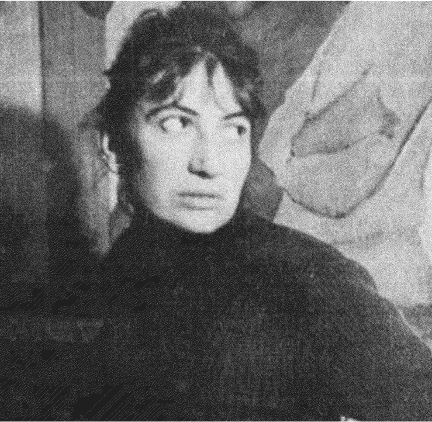Lumturi Blloshmi (1944–2020) will be the first female artist to represent Albania with a solo presentation at the International Art Exhibition – La Biennale di Venezia and Adela Demetja the first Albanian female curator of the Albanian Pavilion. Demetja became friends with Blloshmi in 2016 and was one of her close collaborators until the end of her life.
Lumturi Blloshmi has the needed remarkable biography, the powerful personality and most importantly, the qualitative body of work which makes her unique and significant for the national and international contemporary art discourse. Lumturi Blloshmi's body of work fits very well within this year's theme of the Venice Art Biennale titled “The Milk of Dreams”. The title is borrowed from a book by Leonora Carrington, in which, as the curator of the Biennale Cecilia Alemani says; “the Surrealist artist describes a magical world where life is constantly re-envisioned through the prism of the imagination, and where everyone can change, be transformed, become something and someone else. The exhibition takes us on an imaginary journey through metamorphoses of the body and definitions of humanity.”
Like almost all the artists of her generation, Lumturi Blloshmi painted in socialist realism style until the end of the 80s. After the 90s she was nevertheless one of the few artists of her generation that managed to constantly reposition and transform herself and her work successfully until the end of her life.
Lumturi Blloshmi’s works in painting, photography, installation, and performance are characterized by a certain irony and distinct way of reflecting and overcoming the reality in which she lived. Her dynamic personality and self-awareness, nourished by philosophy, poetry, sensuality and spirituality, have given form to a distinctive body of work that bears witness to the remarkable journey of a creative spirit who endured and created despite political, physical and ideological limitations imposed by life and by the particular context of Communist Albania after the Second World War.
Blloshmi stood in the middle of her cosmos, not a passive viewer but rather an active participant. This allowed her to openly express her perceptions about the art world and its mechanisms and the society of which she was part. Her view was that of a strong woman criticizing and provoking with humor the power establishment dominated by men. What makes her oeuvre remarkable is the symbolic simplicity and optimism she uses when dealing with the harsh reality. Oftentimes Blloshmi depicted herself in her paintings, performances and photographs. By doing so, she clearly created, through subjectivity, a relationship between herself and the given social-political context, which allowed her and us to perceive history and reality from a self-defined and personal point of view.
By cultivating and readopting an approach that goes beyond feminism, nationality, and specific art styles, Blloshmi tirelessly resisted different regimes and developments by building a practice based on her personal experience, transiting from type (Albanian, female, politically persecuted, disabled) to individuation to become one of the most remarkable and innovative contemporary Albanian artists. Nevertheless, her oeuvre has yet to be fully explored and examined and is still relatively unknown among the national and especially the international art world.
“Lumturi Blloshmi. From Scratch” is conceived as an exhibition project aiming at presenting and positioning the work and life of Lumturi Blloshmi anew within the context of national and international art history. This presentation consists of a selection of Blloshmi’s works from the 1960s until the 2010s, spanning self-portraits and compositions in painting and photography that say as much about Blloshmi’s aesthetic essence and personal reality as they do about the specific political and social context in which they were created. By remaining true to the unfiltered urge to express experience awareness, Blloshmi constantly pushed the boundaries of media and formal styles by experimenting with materials and combinations of media to achieve what she called “a distinct tangible universe.” Formally situated within the boundaries of figuration, her oeuvre - strongly informed by imagination and innovation - at its core transmits and resonates a sense of universality and timelessness. The presentation under the title “Lumturi Blloshmi. From scratch” The pavilion is conceived in such a way as to reflect Blloshmi’s tangible yet simultaneously ungraspable universe and its openness to interpretations. The exhibition architecture and display is created by the German architect Johanna Meyer-Grohbrügge.
Two new commissions in video and interactive media about Lumturi Blloshmi, have been realized specially for the pavilion in a collaboration between the curator and invited artists.
Through a virtual constructed environment the viewer will have the possibility to get an overview of Blloshmi's personal world and creative environment. The virtual archive “Lumturi Blloshmi: A personal Geography” has been created in close collaboration between the curator and the British interactive media artist Alexander Walmsley. The interactive archive can be accessed through tablets in the exhibition space as well as online through the website of the pavilion. An experimental documentary aiming at capturing Blloshmis essence, attitude and spirit has been created by Mexican filmmaker Tin Dirdamal in collaboration with the curator.
Blloshmi, sadly passed away in November 2020 due to an infection resulting from Covid-19. We are nevertheless very glad that her work can be exhibited and shared further with the public.
read more













